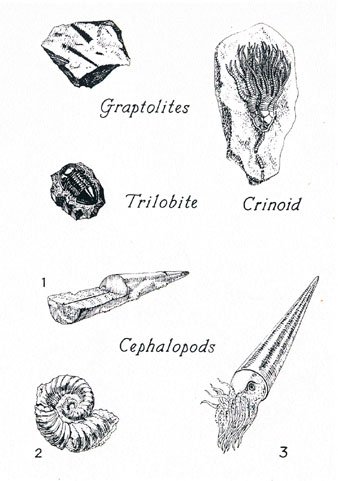Bonnechere Museum's Fossil Collection
Graptolites
These narrow skeletal-like creatures lived nearly 400 million years ago. They floated on the surface of the ocean forming fragile, often branching skeletons. Typically Graptolites were only between ½ and 4 inches long. In the rock they look very much like pencil marks.
Crinoids
The Crinoids’ soft body was protected by several hard plates which formed in a bowl-like shape. From this came tentacle-like arms, which were used to gather food. It was fixed to the sea floor by a long flexible stem consisting of many discs. Once the crinoid died, the discs were scattered over the sea floor, and we find many examples of these in some limestone.
Trilobites
Trilobites are related to crabs, spiders and insects we see today. They were aquatic creatures that had fragmented bodies with multiple limbs. Most fossils of Trilobites are only about an inch long but when they were one of the dominant species in the Cambrian and Ordovician periods, they reached more than eighteen inches long.
Cephalopods
There are many different species of cephalopods. Some have long straight shells and others are intricately coiled and decorated. Cephalopods are related to modern-day squids and cuttlefish. One of the most common fossils found in limestone in Ontario is the straight-shelled species (closely resembling the squid). During the Ordovician period it was one of the most dominant invertebrates and it sometimes reached over four feet in length.
Gastropods
Found in both fresh and salt water, gastropods are commonly known as snails. Many fossils of freshwater gastropods can be found in sands and gravels.
Pelecypods
Also known as clams, pelecypods can be found all over the world. Pelecypods date back as early as the Cambrian period and live in both fresh and salt water.
Brachiopods
Brachiopods resemble clams but are actually unrelated. These animals have been found in rocks dating back as far as 700 million years. Brachiopods were very abundant before the time of the dinosaurs, but have declined since. A species of Brachiopod we still have today is the Lingula, found in mudflats. It has changed very little in the last 100 million years.
Resource: R.R.H. Lemon, Fossils In Ontario


